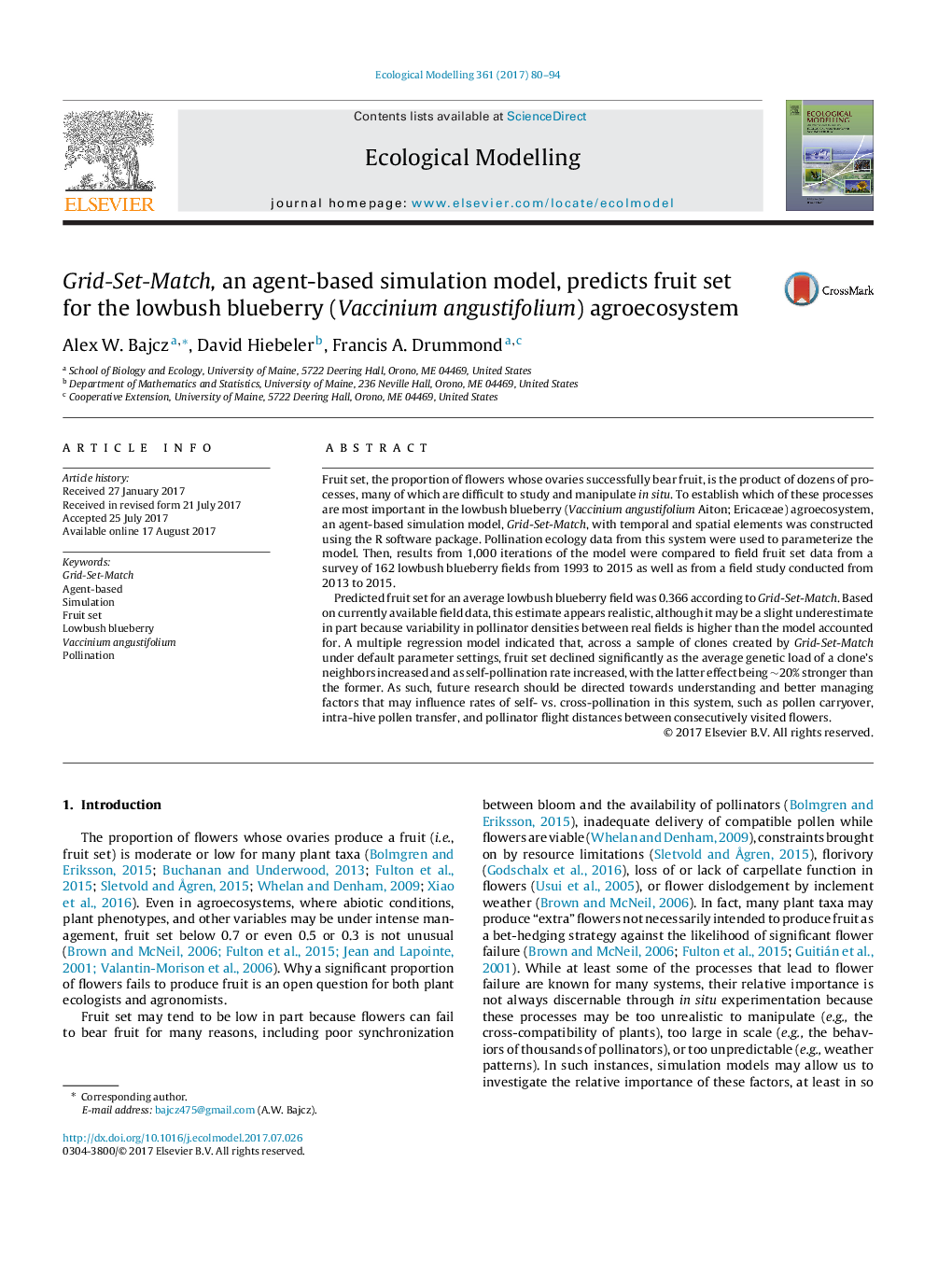| Article ID | Journal | Published Year | Pages | File Type |
|---|---|---|---|---|
| 5741997 | Ecological Modelling | 2017 | 15 Pages |
â¢Simulation models can be used to supplement in situ study of fruit set predictors.â¢Grid-Set-Match is an R-coded agent-based simulation model for studying fruit set.â¢Fruit set predictions of Grid-Set-Match correspond well with real fruit set data.â¢In lowbush blueberry, fruit set declines with self-pollination and genetic load.
Fruit set, the proportion of flowers whose ovaries successfully bear fruit, is the product of dozens of processes, many of which are difficult to study and manipulate in situ. To establish which of these processes are most important in the lowbush blueberry (Vaccinium angustifolium Aiton; Ericaceae) agroecosystem, an agent-based simulation model, Grid-Set-Match, with temporal and spatial elements was constructed using the R software package. Pollination ecology data from this system were used to parameterize the model. Then, results from 1,000 iterations of the model were compared to field fruit set data from a survey of 162 lowbush blueberry fields from 1993 to 2015 as well as from a field study conducted from 2013 to 2015.Predicted fruit set for an average lowbush blueberry field was 0.366 according to Grid-Set-Match. Based on currently available field data, this estimate appears realistic, although it may be a slight underestimate in part because variability in pollinator densities between real fields is higher than the model accounted for. A multiple regression model indicated that, across a sample of clones created by Grid-Set-Match under default parameter settings, fruit set declined significantly as the average genetic load of a clone's neighbors increased and as self-pollination rate increased, with the latter effect being â¼20% stronger than the former. As such, future research should be directed towards understanding and better managing factors that may influence rates of self- vs. cross-pollination in this system, such as pollen carryover, intra-hive pollen transfer, and pollinator flight distances between consecutively visited flowers.
